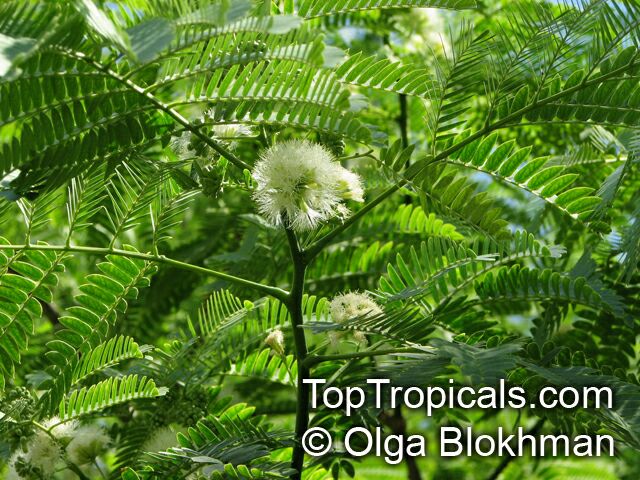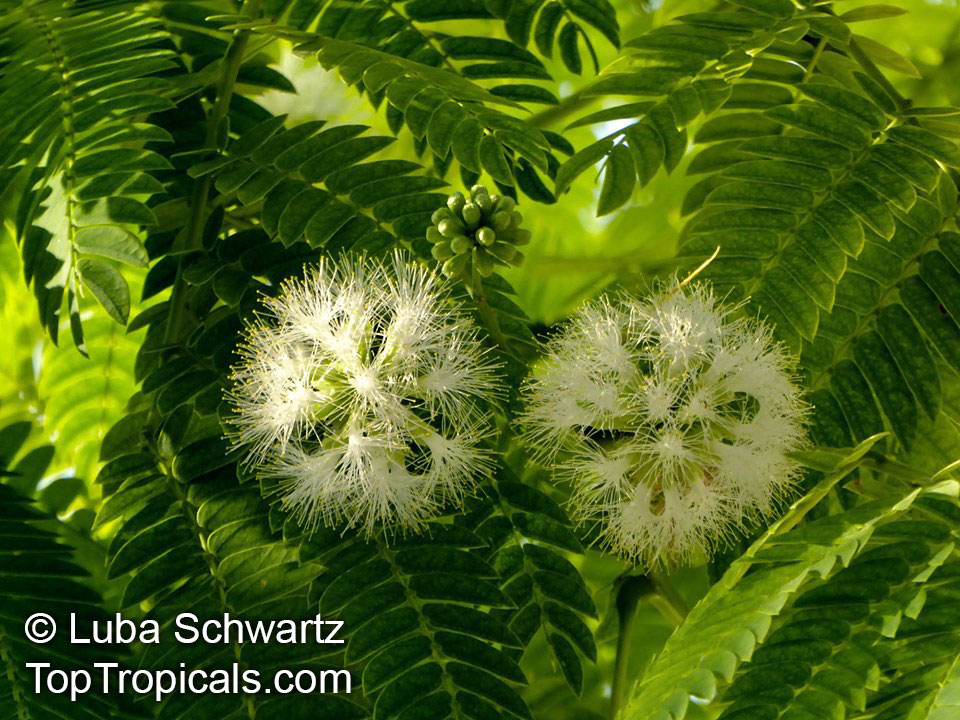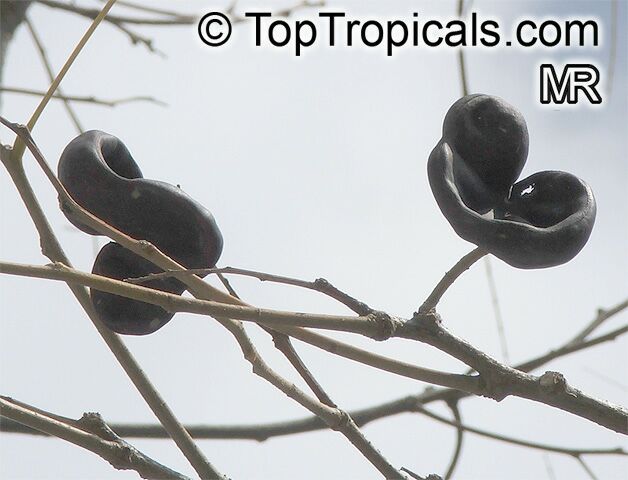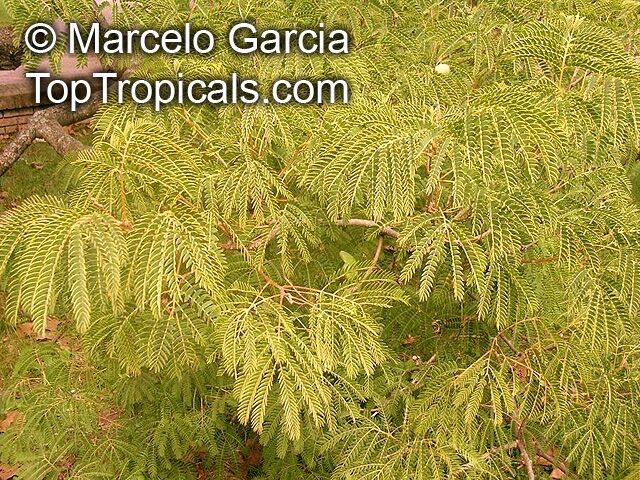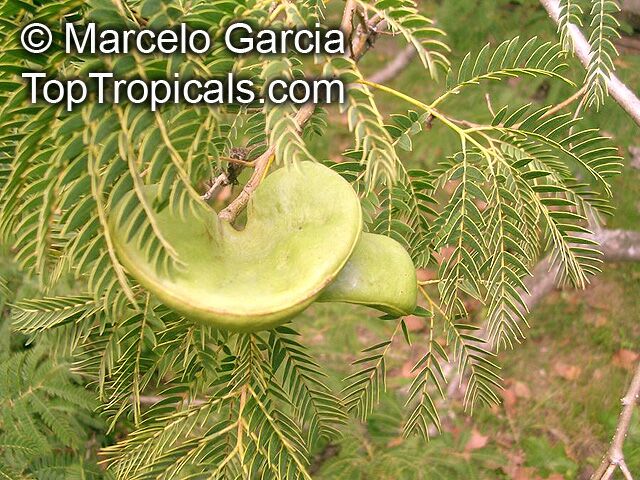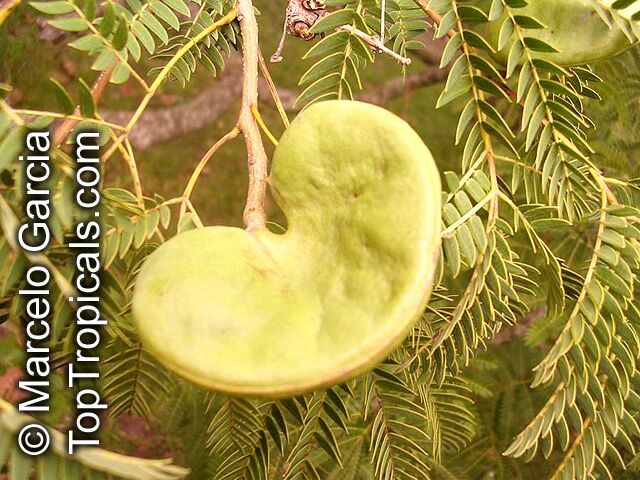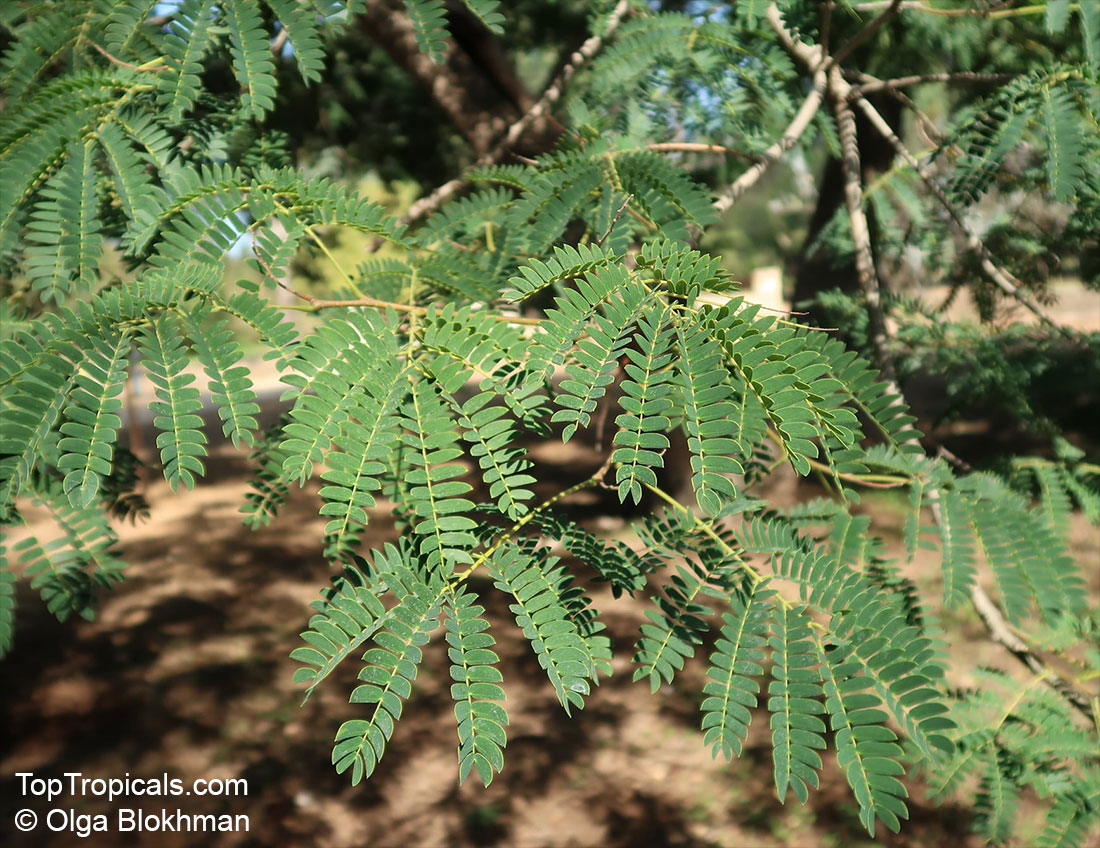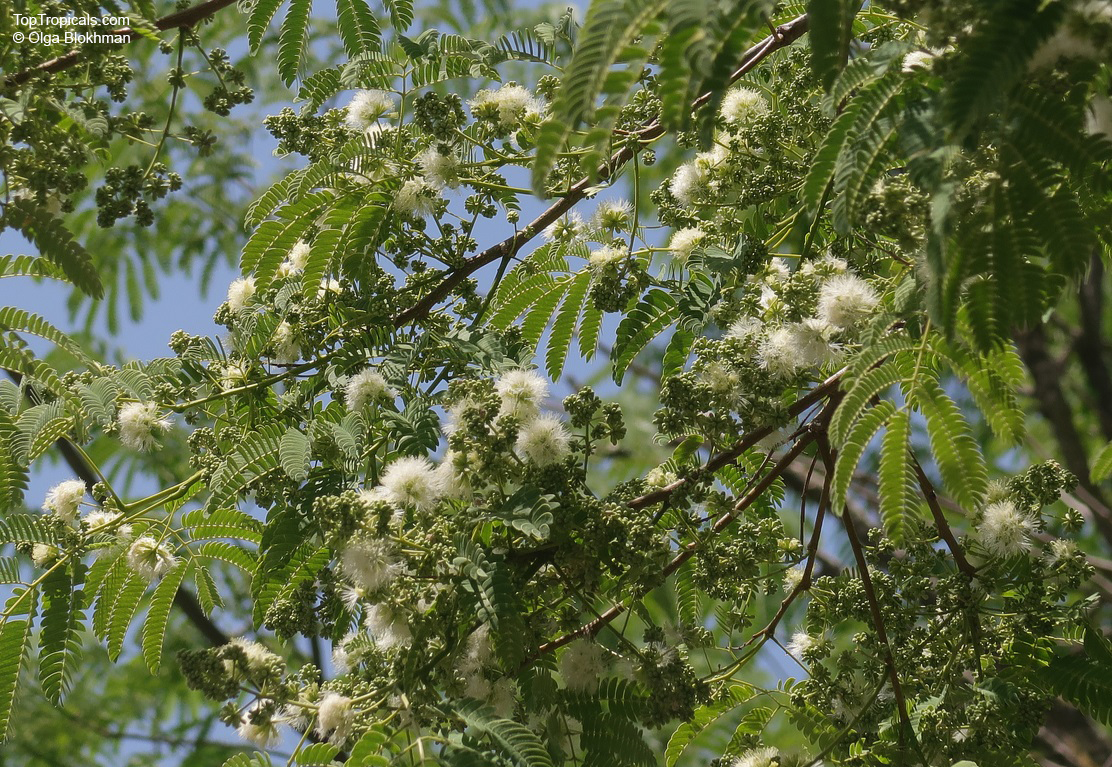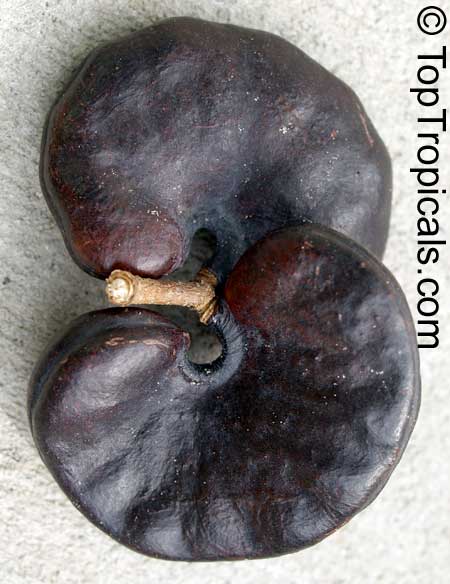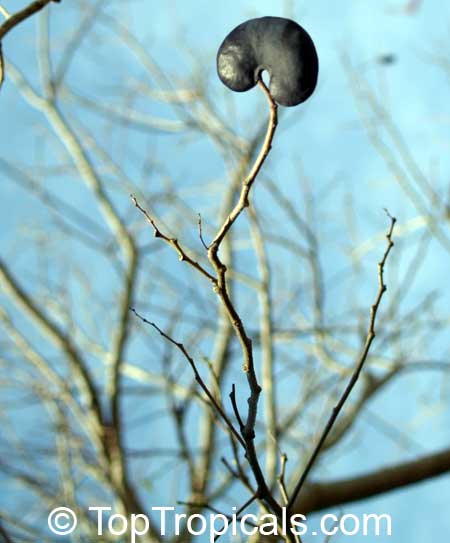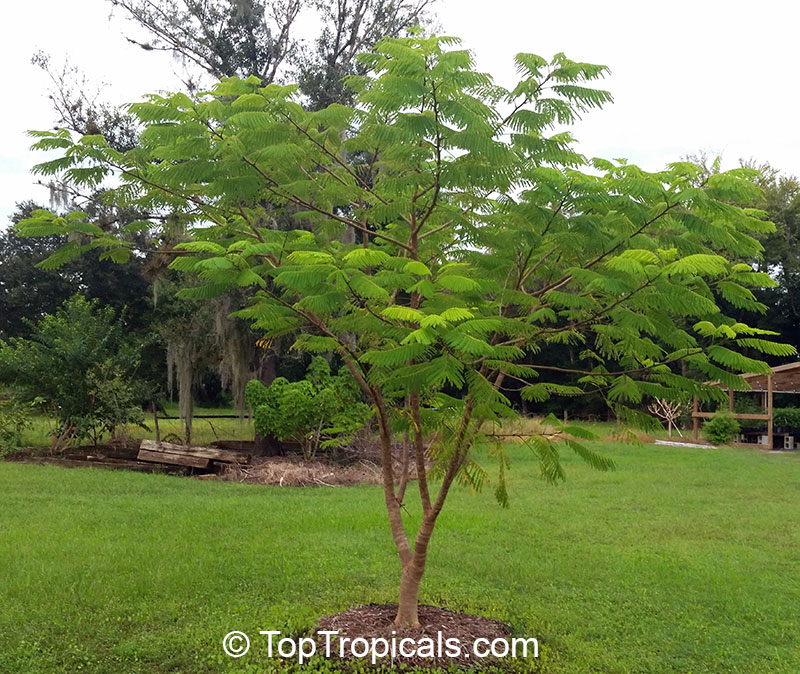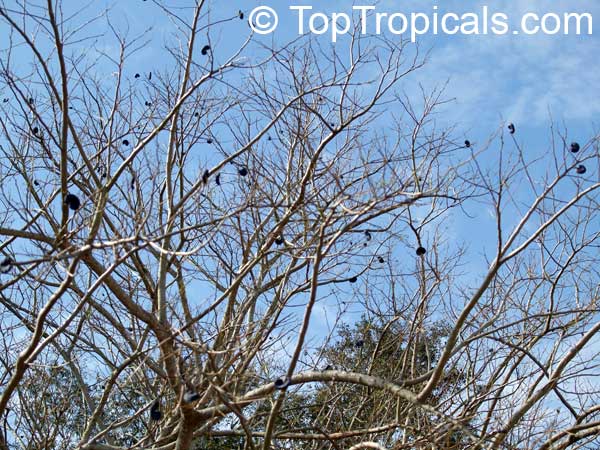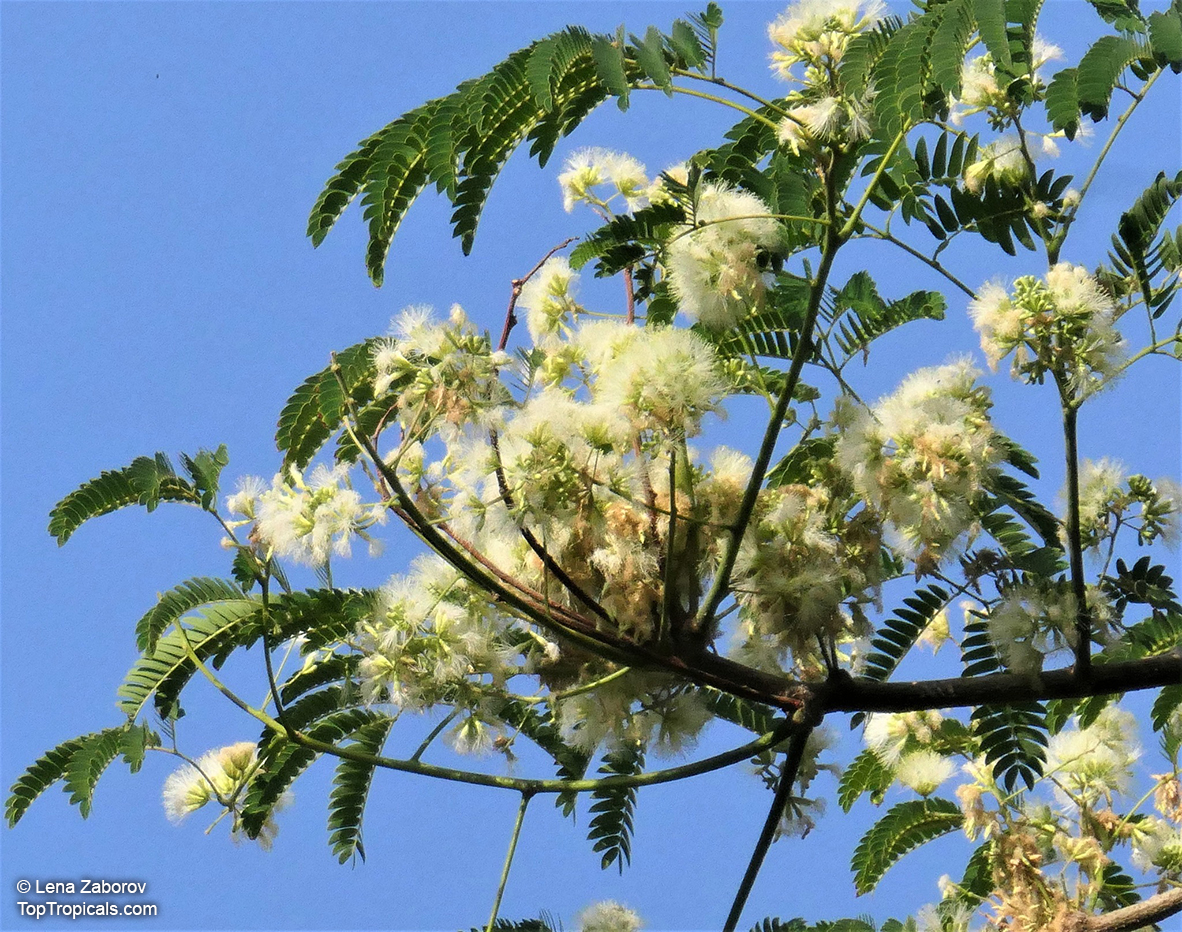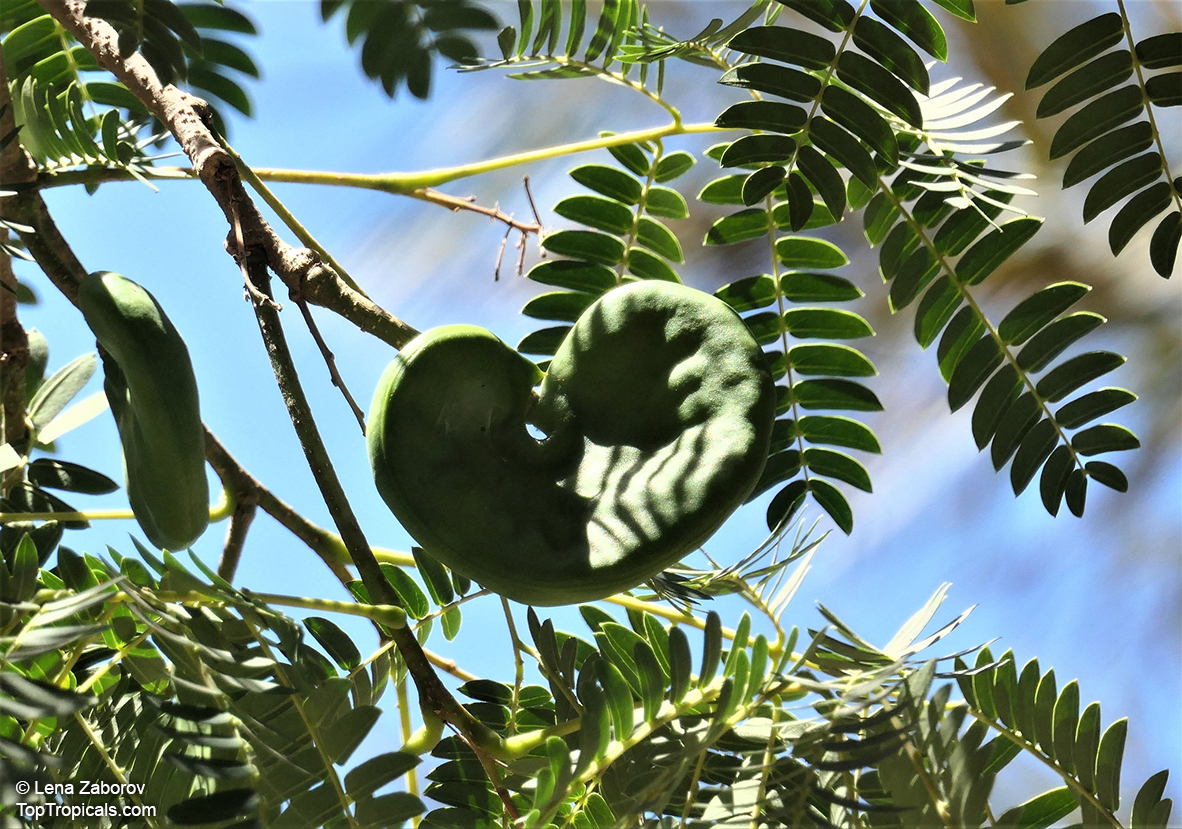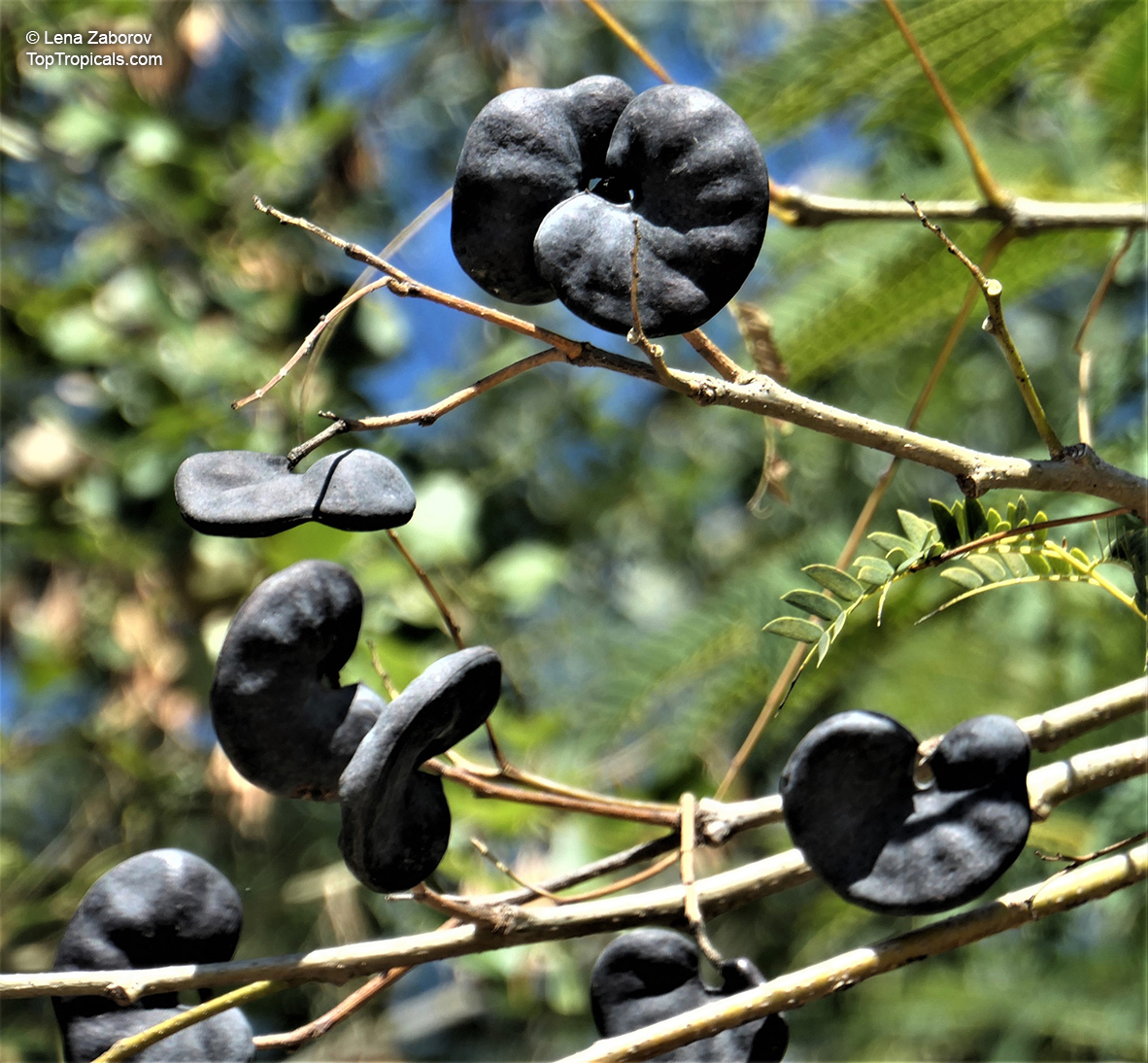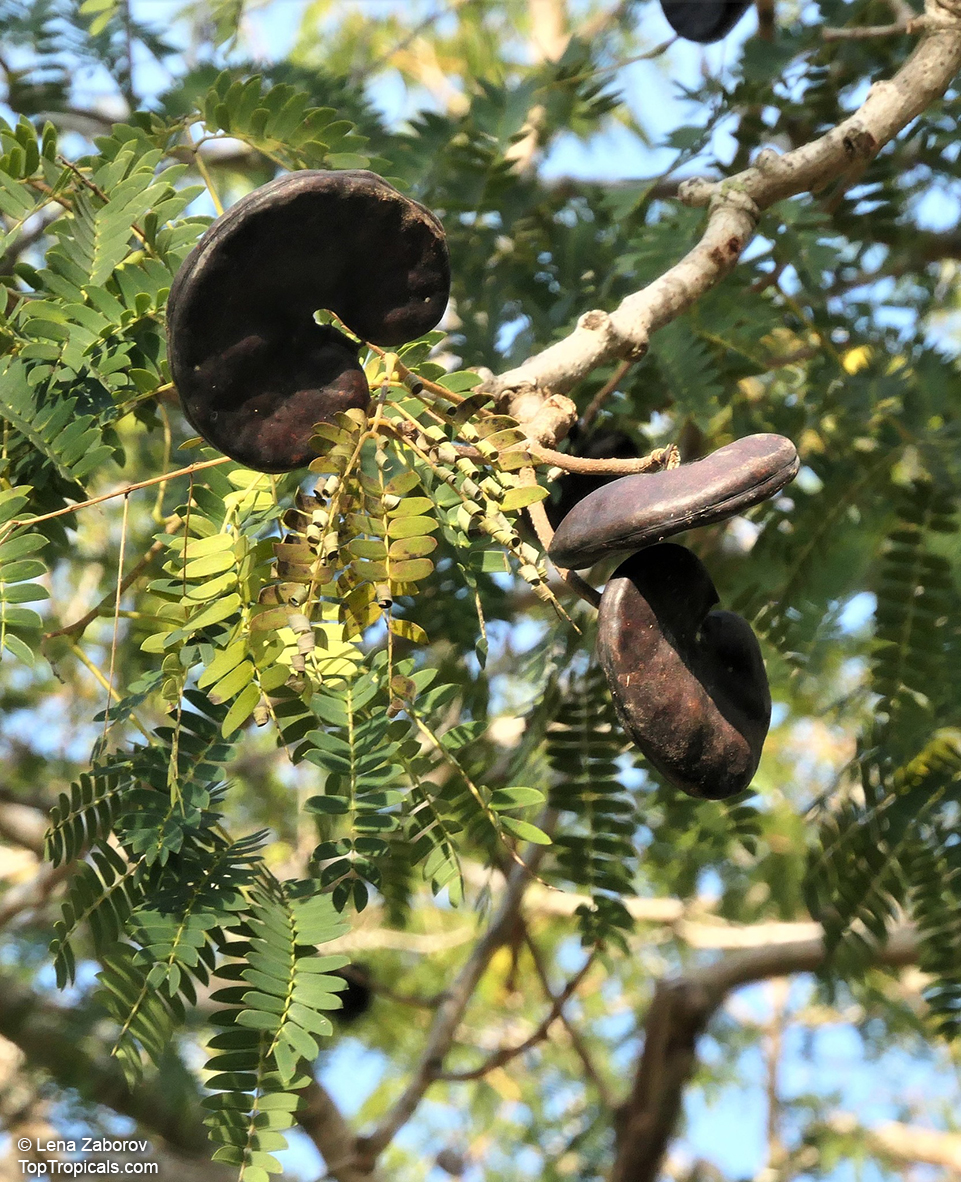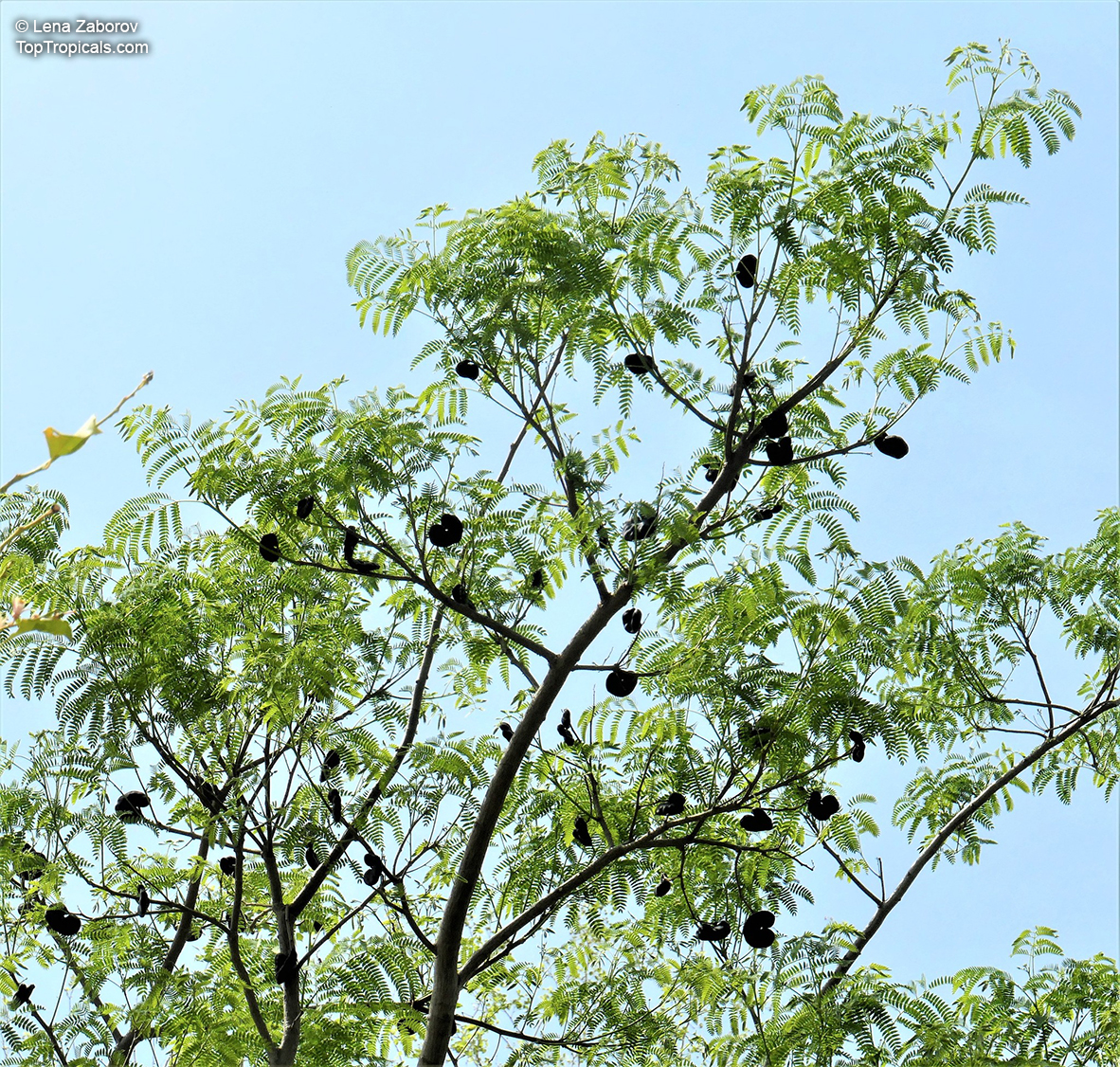Enterolobium - Search results
Top Tropicals Plant Encyclopedia
| Number of plants found: 2 |
Botanical names: Enterolobium contortisiliquum, Mimosa contortisiliqua
Common names: Earpod Tree, Orelha-de-macaco
Family: Fabaceae
Subfamily: Mimosoideae
Origin: South America





Enterolobium contortisiliquum, also known as Earpod Tree, is a deciduous plant native to South America. It is a big tree, growing taller than 20 ft with a broad crown, and can be found in USDA zones 9-11. It is a comparatively low maintenance tree, preferring full sun and an occasional watering. In the right conditions, it can be grown without irrigation.
The tree produces off-white to white flowers in the spring and early summer, which are followed by large and distinctive seedpods. These pods can be up to 6 in long and look like elephant ears. The leaves are bipinnate and can reach lengths of up to 12 in.
The Enterolobium contortisiliquum is a spectacular and unique addition to any garden or landscape. Its fruit and foliage provide texture to the landscape and its large size, beautiful flowers and ornamental seedpods guarantee a head-turning display.
Planting Enterolobium contortisiliquum is easy and, once established, requires minimal care. Plant it in well-draining soil and, if you live in a dry region, it can be beneficial to form a basin around the base of the trunk which will capture run-off water. In especially cold regions, potting up this tree can help it survive a harsher winter. When you do, opt for a large pot and use a mixture of potting soil, mulch and compost for a rich, well-draining mix. You should also use rainwater in the pot, as this will be better for your tree than tap water.
Overall, the Enterolobium contortisiliquum is an attractive and low-maintenance addition to any outdoor space. With its impressive size and ornamental look, it can add depth and character to any garden.
Botanical name: Enterolobium cyclocarpum
Common names: Monkey Ear, Ear Pod Tree, Elephant Ear Tree, Eartree, Guanacaste Tree, Arbol de Guanacaste
Family: Fabaceae
Subfamily: Mimosoideae
Origin: Central America






Monkey Ear, Ear Pod Tree, Elephant Ear Tree. Looking for a cool looking tree that grows faster than your to-do list? This large, feathery beauty is one of the quirkiest members of the subtropics.
This fast-growing, cold-hardy giant provides ample shade in no time, making it perfect for anyone seeking instant relaxation under a canopy. But here's the real kicker - the tree's pods curl up to resemble ears! These unique legume pods aren't just fun to look at, they're also great for crafts and decorations. Nature's art project, anyone?
So, if you're looking for a curious tree with personality (and maybe a bit of ear charm), the Monkey Ear Tree is ready to impress. Grow it, shade it, and get crafty with its ear-shaped pods!
This large feathery shade tree is very popular in Mexico. The legume pod is curled up and looks like an ear. The species name means fruit in a circle, referring to the oddly shaped pods of this species. This tree is the national tree of Costa Rica and El Salvador. This fast growing tree reaches heights of 100 feet with a spread of 70 feet or more. The trunk is brown with many stems. The bipinnate leaves have 20 to 30 pairs of leaflets. The small white flowers are formed on green pompoms. They are followed by a flattened, dark brown seedpod, curved into a circle about 3 to 6 inches long and resembling a strange ear. Most notably, the pods of this tree are used extensively as decoration and for crafts. The litter from the leaves is used for animal fodder.
Nothing found

